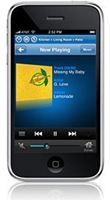 I mentioned the Kupuk Zones a while back; an application for the Apple iPhone / iPod Touch that lets you control the Sonos Zone Players. Now Sonos themselves have released a zone controller for the iPhone. The reactions in the community the last couple of days have been hurrayingly positive and admittedly the logic of having Sonos themselves do the development would by itself be enough to warrant such a reaction. Now they only need to release a Zone Player application for PC and Mac to keep their shareholders a tad on the fringe.
I mentioned the Kupuk Zones a while back; an application for the Apple iPhone / iPod Touch that lets you control the Sonos Zone Players. Now Sonos themselves have released a zone controller for the iPhone. The reactions in the community the last couple of days have been hurrayingly positive and admittedly the logic of having Sonos themselves do the development would by itself be enough to warrant such a reaction. Now they only need to release a Zone Player application for PC and Mac to keep their shareholders a tad on the fringe.
media|STREAMERS
The market for media hubs is difficult to navigate – I try to chart some waters here
Author Archives: Thomas Nielsen
Sonos Controller for iPhone
Goldster Audio Concertino
![]()
![]()
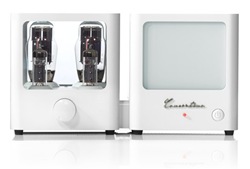 This one had me sold by looks alone. It doesn’t even come close to being an audio streamer. What it is, though, is one cool looking iPod dock.
This one had me sold by looks alone. It doesn’t even come close to being an audio streamer. What it is, though, is one cool looking iPod dock.
With a power consumption of 190W and an output of 7,5W it is a classic example of tube driven class-A inefficiency but undoubtedly a notch up the hifi-ladder for the iPod. Of course, this isn’t the first ipod tube dock but it certainly is the one most becoming in a Mac home.
 The amplifier is built specifically to drive a set of accompanying speakers. The output transformer has been built into the speakers to keep the amplifier’s form factor down and thus its cuteness factor up.
The amplifier is built specifically to drive a set of accompanying speakers. The output transformer has been built into the speakers to keep the amplifier’s form factor down and thus its cuteness factor up.
Resolution Audio Opus 21 IXS
![]()
![]()
![]()
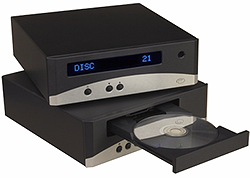 The Resolution Audio IXS is not included on the Resolution Audio web site yet, so this is pretty much a concoction of spottings.
The Resolution Audio IXS is not included on the Resolution Audio web site yet, so this is pretty much a concoction of spottings.
Resolution Audio is already famous for their Opus 21 CD player which combines with their Opus 21 XS [Extra Source] device lift their system above normality, utilizing the CD player DAC for digital audio. All components are powered from an external power supply, aptly named Opus 21 Power Centre. It is from the power supply you are informed of what is currently playing. Now, the IXS stands apart from the original XS in that it supports streaming iTunes tracks from an iTunes serving computer. Through an iPod Touch, or indeed anything capable of remote controlling your iTunes library, you can control which tracks are played. In detail how it differs from the XS remains to be resolved, since the original XS itself has 5 digital inputs of which one is USB, meaning that listening to iTunes with the help of an iPod Touch was already possible. Such are unofficial information; you cannot always get the details.
Kaleidescape 1U Server & Music Player
![]()
![]()
![]()
 In itself the 1U Server seems fairly uninteresting but with the Kaleidescape Music Player in the mix it immediately turns into a hefty competitor in the media server market – even if it may appear somewhat uneconomical [diplomatically speaking].
In itself the 1U Server seems fairly uninteresting but with the Kaleidescape Music Player in the mix it immediately turns into a hefty competitor in the media server market – even if it may appear somewhat uneconomical [diplomatically speaking].
The server comes in two versions. The 1U has 1TB of storage which can be extended to 4TB through modular drive bays. The 3U also starts with 1TB but can be extended to a stunning 12TB. The really stunning part comes when you start clustering the servers in which case you reach a mindboggling 100TB of music and/or DVD storage. Now – let us assume that a CD contains 700MB of data [which, believe my, is a very high assumption] and you divide that into 100TB, you end up with 150,000 CDs. If the Kaleidescape servers didn’t already drain your bank accounts, the CD purchases might.
The server can cover 45 discrete zones and perform up to 4 simultaneous rips. The Kaleidescape Music Player is one of your options for those zones as well as a number of full HD video components. The Music Player itself can handle 4 discrete zones at a resolution of up to 24bit/192KHz and sports a CD/DVD drive in its sleek exterior.
Creative X-Fi Notebook
![]()
![]()
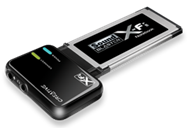 Frankly this gadget was hard to fit into this blog but somehow it needs to be here. It is actually two devices. The X-Fi Notebook is a PCCARD soundcard with built-in wireless transmission using the other part of the equation; the Creative Wireless Receiver.
Frankly this gadget was hard to fit into this blog but somehow it needs to be here. It is actually two devices. The X-Fi Notebook is a PCCARD soundcard with built-in wireless transmission using the other part of the equation; the Creative Wireless Receiver.
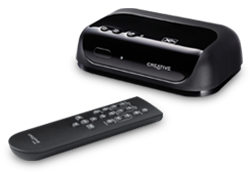 With the receiver it should be possible to transmit music to 4 discrete zones, each equipped with one. In other words: With a decent notebook, an X-Fi Notebook and sufficient receivers, you could build a multi-zone streamer fairly easily. The soundcard itself supports resolutions up to 24bit/48KHz and works pretty much as any other soundcard.
With the receiver it should be possible to transmit music to 4 discrete zones, each equipped with one. In other words: With a decent notebook, an X-Fi Notebook and sufficient receivers, you could build a multi-zone streamer fairly easily. The soundcard itself supports resolutions up to 24bit/48KHz and works pretty much as any other soundcard.
Crestron ADMS
![]()
![]()
![]()
![]()
![]()
 Someone at Crestron has nimbly avoided being called narrow minded for quite some time to come, hacking together this truly massive beast of features galore. Okay, it serves media; not just music but video as well. Video from DVD or Blu-ray as well as downloaded rentals. All this in full HD and 7.1 surround sound into 3 zones. Sound is served in a resolution of up to 24bit/96KHz and practically all formats known to man have been squeezed in.
Someone at Crestron has nimbly avoided being called narrow minded for quite some time to come, hacking together this truly massive beast of features galore. Okay, it serves media; not just music but video as well. Video from DVD or Blu-ray as well as downloaded rentals. All this in full HD and 7.1 surround sound into 3 zones. Sound is served in a resolution of up to 24bit/96KHz and practically all formats known to man have been squeezed in.
Like all things Crestron, the ADMS can be operated from their control panels that also operate their home automation systems. The ADMS supports up to 1TB of RAID storage as well as NAS. It has Firewire, USB, S/PDIF, MMC and HDMI on the digital side of things, and a bunch of analogue ins and outs. All in an everything but discrete package.
Cambridge Audio DacMagic
![]()
![]()
 The Cambridge Audio DacMagic has existed for a couple of years but has now had a sort of re-debut at CEDIA in Denver. The new version kicks some serious situpon [you cannot imagine how thrilled I am to use that word] with not only three digital inputs [one of which is USB] and a digital out; but balanced outputs and full 24bit/192KHz resolution from two Wolfson DACs upscaled from a number of resolutions up to 24bit/96KHz. A nifty little device.
The Cambridge Audio DacMagic has existed for a couple of years but has now had a sort of re-debut at CEDIA in Denver. The new version kicks some serious situpon [you cannot imagine how thrilled I am to use that word] with not only three digital inputs [one of which is USB] and a digital out; but balanced outputs and full 24bit/192KHz resolution from two Wolfson DACs upscaled from a number of resolutions up to 24bit/96KHz. A nifty little device.
NuVo Music Port
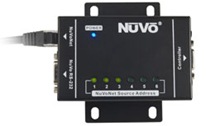 The Nuvo Music port is not an audio device in its own right but an add-on for their large music systems such as NuVo Grand Concerto and NuVo Essentia E6G.
The Nuvo Music port is not an audio device in its own right but an add-on for their large music systems such as NuVo Grand Concerto and NuVo Essentia E6G.
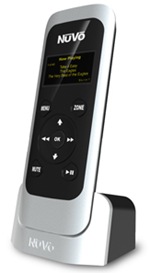 The Music Port is a hardware interface that connects a PC to the system and lets it not only control the NuVo systems but also act as a source. It even lets you collect music from other network places and aggregate them in one playlist. A PC with two 5.1 surround sound cards can then serve 6 streams and truly be a part of a cool setup.
The Music Port is a hardware interface that connects a PC to the system and lets it not only control the NuVo systems but also act as a source. It even lets you collect music from other network places and aggregate them in one playlist. A PC with two 5.1 surround sound cards can then serve 6 streams and truly be a part of a cool setup.
With their new wireless controller, they are getting pretty close to some of the core features of the Sonos system fusing it with those of a home automation system. The infinitely spiffy Sonos remote is far from being in jeopardy, though, nor do I expect it to be anytime soon.
Logitech Squeezebox Boom
![]()
![]()
![]()
![]()
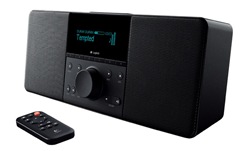 Adding to their Squeezebox line-up, Logitech has recently released their Squeezebox Boom. It uses the same technology as the Squeezebox Duet, in fact it can be controlled from the same remote and be a part of a system. Not entirely unlike the Sonos players that also come in a line-out unamplified version and one with a 50W power stage. The Squeezebox Boom just adds a pair of built-in speakers to make it an autonomous unit.
Adding to their Squeezebox line-up, Logitech has recently released their Squeezebox Boom. It uses the same technology as the Squeezebox Duet, in fact it can be controlled from the same remote and be a part of a system. Not entirely unlike the Sonos players that also come in a line-out unamplified version and one with a 50W power stage. The Squeezebox Boom just adds a pair of built-in speakers to make it an autonomous unit.
With specs like its sister device, sound quality is only limited to the quality of the amplifier and the miniscule speakers which, incidentally, sound incredibly good for their size. There is a 7-day alarm clock [with a built-in snooze button, no less] and automatic dimming of the display, making this perfect for a bedroom setup.
First impressions are that of a solid device. It is heavy and feels rather rugged in its rubbery front panel covering and shiny cabinet. Buttons operate smoothly and the remote, however small, feels good even in large hands and has quite a good reach. The display may seem old fashioned but the fact is that this type of Nixie-look-a-like display works very well in a dimly lit room, where color LCDs have a tendency to be overly bright. In addition to the ever present Squeezebox controls, the front panel offers 6 preset buttons that can be programmed directly from the device or from a Squeezebox Server using the KidsPlay plugin. Using this plugin gives you an almost unbelievable amount of programming options, such as (but all but limited to) choosing a random mix of tracks of a given genre while showing a brief message on the display as to which genre that is while clearing previous playlist selections. Nice, eh? In fact, it is difficult not to fiddle.
Should you need to, the Squeezebox Boom can be mounted in several positions with an optional L-bracket.
McIntosh MCD500
![]()
![]()
![]()
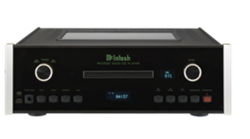 It’s been a year since McIntosh introduced their larger than life [literally] music server MS750 with specs that would boggle anyone’s mind and rich with novel ideas. On such novelty was the ability to stream an analogue source through a high end A/D converter. Now McIntosh shows off again releasing a new SACD player, not really belonging on this blog. One cool things about the MCD500 that brings it in accord of this blog, however, is a number of digital inputs that allow you to use the McIntosh’s 24bit/192KHz quad balanced DAC for other digital devices. With an attenuated output, balanced from 0-6V or unbalanced from 0-12V, it is even perfectly capable of driving an end stage. In other words a pre-amplifier with a built-in DAC. The SACD transport simply thrown in free of charge for good measure. What else could you ask for? The money you save [there’s an oxymoron for you] can be well invested in a pretty wood cabinet that muffles the trademark McIntosh smack-dab-in-your-face exterior.
It’s been a year since McIntosh introduced their larger than life [literally] music server MS750 with specs that would boggle anyone’s mind and rich with novel ideas. On such novelty was the ability to stream an analogue source through a high end A/D converter. Now McIntosh shows off again releasing a new SACD player, not really belonging on this blog. One cool things about the MCD500 that brings it in accord of this blog, however, is a number of digital inputs that allow you to use the McIntosh’s 24bit/192KHz quad balanced DAC for other digital devices. With an attenuated output, balanced from 0-6V or unbalanced from 0-12V, it is even perfectly capable of driving an end stage. In other words a pre-amplifier with a built-in DAC. The SACD transport simply thrown in free of charge for good measure. What else could you ask for? The money you save [there’s an oxymoron for you] can be well invested in a pretty wood cabinet that muffles the trademark McIntosh smack-dab-in-your-face exterior.
Copyright © 2025. Powered by WordPress & Romangie Theme.